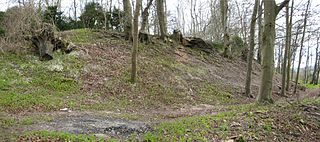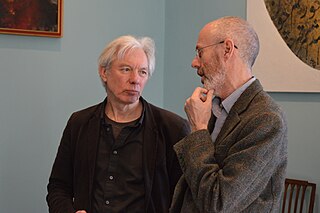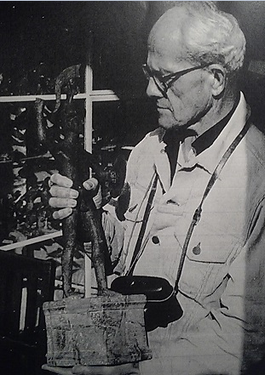
Stonehenge is a prehistoric monument on Salisbury Plain in Wiltshire,England,two miles (3 km) west of Amesbury. It consists of an outer ring of vertical sarsen standing stones,each around 13 feet (4.0 m) high,seven feet (2.1 m) wide,and weighing around 25 tons,topped by connecting horizontal lintel stones. Inside is a ring of smaller bluestones. Inside these are free-standing trilithons,two bulkier vertical sarsens joined by one lintel. The whole monument,now ruinous,is aligned towards the sunrise on the summer solstice and sunset on the winter solstice. The stones are set within earthworks in the middle of the densest complex of Neolithic and Bronze Age monuments in England,including several hundred tumuli.

Avebury is a Neolithic henge monument containing three stone circles,around the village of Avebury in Wiltshire,in southwest England. One of the best known prehistoric sites in Britain,it contains the largest megalithic stone circle in the world. It is both a tourist attraction and a place of religious importance to contemporary pagans.

The Sanctuary was a stone and timber circle near the village of Avebury in the south-western English county of Wiltshire. Excavation has revealed the location of the 58 stone sockets and 62 post-holes. The ring was part of a tradition of stone circle construction that spread throughout much of Britain,Ireland,and Brittany during the Late Neolithic and Early Bronze Age,over a period between 3300 and 900 BCE. The purpose of such monuments is unknown,although archaeologists speculate that the stones represented supernatural entities for the circle's builders.

Sir John Grahame Douglas Clark,who often published as J. G. D. Clark,was a British archaeologist who specialised in the study of Mesolithic Europe and palaeoeconomics. He spent most of his career working at the University of Cambridge,where he was appointed Disney Professor of Archaeology from 1952 to 1974 and Master of Peterhouse from 1973 to 1980.
Michael Parker Pearson,is an English archaeologist specialising in the study of the Neolithic British Isles,Madagascar and the archaeology of death and burial. A professor at the UCL Institute of Archaeology,he previously worked for 25 years as a professor at the University of Sheffield in England,and was the director of the Stonehenge Riverside Project. A prolific author,he has also written a variety of books on the subject.

Francis Manning Marlborough Pryor is an English archaeologist specialising in the study of the Bronze and Iron Ages in Britain. He is best known for his discovery and excavation of Flag Fen,a Bronze Age archaeological site near Peterborough,as well as for his frequent appearances on the Channel 4 television series Time Team.
Archaeoacoustics is a sub-field of archaeology and acoustics which studies the relationship between people and sound throughout history. It is an interdisciplinary field with methodological contributions from acoustics,archaeology,and computer simulation,and is broadly related to topics within cultural anthropology such as experimental archaeology and ethnomusicology. Since many cultures have sonic components,applying acoustical methods to the study of archaeological sites and artifacts may reveal new information on the civilizations examined.
C. Joshua Pollard is a British archaeologist who is a professor of archaeology at the University of Southampton. He gained his BA and PhD in archaeology from the Cardiff University,and is a specialist in the archaeology of the Neolithic period in the UK and north-west Europe,especially in relation to the study of depositional practices,monumentality,and landscape. He is a Fellow of the Society of Antiquaries of London

Vespasian's Camp is an Iron Age hillfort just west of the town of Amesbury,Wiltshire,England. The hillfort is less than 3 kilometres (2 mi) from the Neolithic and Bronze Age site of Stonehenge,and was built on a hill next to the Stonehenge Avenue;it has the River Avon on its southern side and the A303 road on its northern edge. The site is a scheduled monument and lies within the boundaries of the Stonehenge World Heritage Site.
Julian Stewart Thomas is a British archaeologist,publishing on the Neolithic and Bronze Age prehistory of Britain and north-west Europe. Thomas has been vice president of the Royal Anthropological Institute since 2007. He has been Professor of Archaeology at the University of Manchester since 2000,and is former secretary of the World Archaeological Congress. Thomas is perhaps best known as the author of the academic publication Understanding the Neolithic in particular,and for his work with the Stonehenge Riverside Project.
Timothy Darvill OBE is an English archaeologist and author,best known for his publications on prehistoric Britain and his excavations in England,Wales,and the Isle of Man. He is Professor of Archaeology in the Faculty of Science and Technology Bournemouth University in England. In April 2008 he co-directed excavations within Stonehenge,together with Professor Geoffrey Wainwright and Dr Miles Russell,to examine the early stone structures on the site. The work featured heavily in a BBC Timewatch programme which examined the theory that Stonehenge was a prehistoric centre of healing. He was appointed OBE in the 2010 Queen's Birthday Honours.

Michael W. Pitts,is an English freelance journalist and archaeologist who specialises in the study of British prehistory. He is the author of several books on the subject,and is the editor of British Archaeology,the publication of the Council for British Archaeology.

The stone circles in the British Isles and Brittany are a megalithic tradition of monuments consisting of standing stones arranged in rings. These were constructed from 3300 to 900 BCE in Britain,Ireland and Brittany. It has been estimated that around 4,000 of these monuments were originally constructed in this part of north-western Europe during this period. Around 1,300 of them are recorded,the others having been destroyed.

In the Neolithic and Bronze Age British Isles,rock art was produced across various parts of the islands. Petroglyphic in nature,the majority of such carvings are abstract in design,usually cup and ring marks,although examples of spirals or figurative depictions of weaponry are also known. Only one form of rock art in Europe,this late prehistoric tradition had connections with others along Atlantic Europe,particularly in Galicia.
Miles Russell,is a British archaeologist best known for his work and publications on the prehistoric and Roman periods and for his appearances in television programmes such as Time Team and Harry Hill's TV Burp.

Leslie Valentine Grinsell was an English archaeologist and museum curator. Publishing over twenty books on archaeology during his lifetime,he was renowned as a specialist on the prehistoric barrows of southern England.
Barbara Bender is an anthropologist and archaeologist. She is currently Emeritus Professor of Heritage Anthropology at University College London.

Falkner's Circle was a stone circle near the village of Avebury in the south-western English county of Wiltshire. Built from twelve sarsen megaliths,it measured about 37 metres (121 ft) in diameter,although only one of these stones remains standing.
Hodson Stone Circle was a stone circle in the village of Hodson in the south-western English county of Wiltshire. The ring was part of a tradition of stone circle construction that spread throughout much of Britain,Ireland,and Brittany during the Late Neolithic and Early Bronze Age,over a period between 3300 and 900 BCE. The purpose of such monuments is unknown,although some archaeologists speculate that the stones represented supernatural entities for the circle's builders.
John C. Barrett,is a British archaeologist,prehistorian,and Emeritus Professor of Archaeology at the Department of Archaeology,University of Sheffield. His research has primarily focussed on archaeological theory,European Prehistory from early agriculture to Romanisation,and the development of commercially funded archaeology in the UK. Barrett has been seen as an influential figure in the development of archaeological theory,critiques of archaeological practice,and British Prehistory.











